A Life in Trees
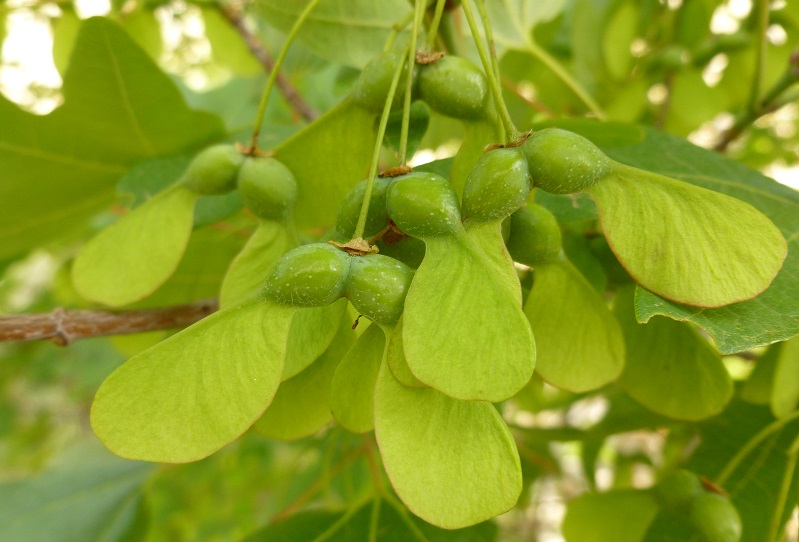
Bigtooth maple (Acer grandidentatum). PHOTO Lee Page
GROWING UP, Earth Day always seemed to be about planting trees. Seedlings were given out at my small-town Midwestern grade school, and I remember planting a little pine sapling in our backyard.
I was the type of kid who collected (and dissected) pods from Catalpa trees, launched “helicopters” (samara) from the sugar maples in my front yard and punched holes in hackberry leaves by removing the nipple bulbs caused by psyllids; who spent study hall painstakingly crafting a “Save the World” sweatshirt for myself, fashioning a meticulously accurate earth in fabric paint on a jersey gray crewneck.
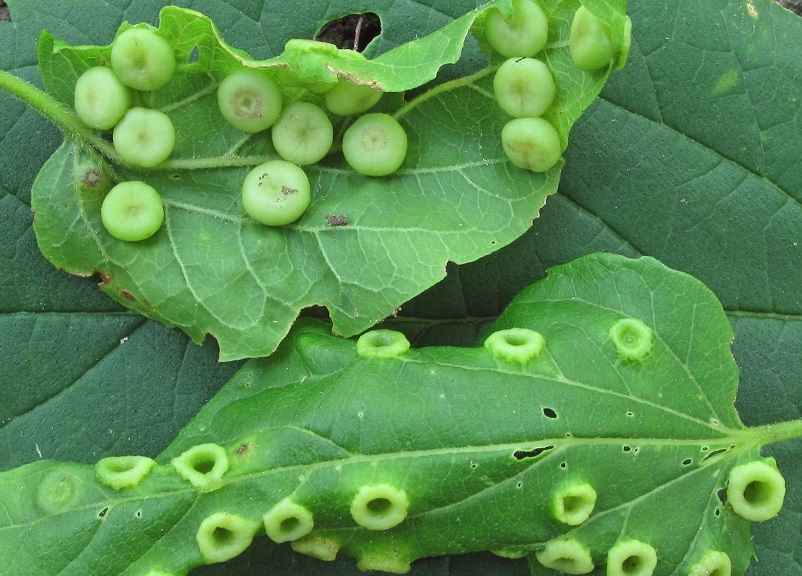
Common hackberry (Celtis occidentalis) leaves with psyllid-caused nipple bulbs. PHOTO Alan Cressler
Point is, I was perhaps more jazzed about the world-saving power of trees than your average youngster. So I was especially excited to be given that pine sapling — not to mention the responsibility of planting and caring for it. It was only about a foot tall when my dad accidentally ran it over with the lawnmower. (Don’t judge him too harshly; it was undoubtedly camouflaged by untended grass.)
I was overwrought. My dream of seeing that little pine tree, whatever species it may have been, grow into something impressive — eventually providing shade and a blanket of orange-needle carpeting to step on, forming pine cones for me to dismember, emitting boreal smells to match our Illinoisan setting — had been crushed. Mowed, to be exact. But my fascination with trees was not.
Now, experiencing my very first Earth Day as a new employee with the Lady Bird Johnson Wildflower Center, I can’t help but reflect on how that obsession with trees and the place-making quality of native plants has followed me through my adult life. I bet you can relate: Trees (and other plants) have a way of signposting different moments throughout our lives and grounding our experiences in place. In celebration, I invite you to join me on a brief, tree-lined trip through my years on earth so far. Along the way, consider what would be included in your own arboreal autobiography.
At 13 years old, a family vacation took me to the Grand Canyon, introducing me to the majesty of the saguaro, its thick limbs of spiky green jutting vertically into the stark desert landscape.
As a teenager, I was fortunate enough to take the occasional summer trip to Colorado’s Summit County for hiking and trout fishing, marveling at the chalk-white trunks and silvery leaves of the aspens fluttering in cool Rocky Mountain summer breezes.
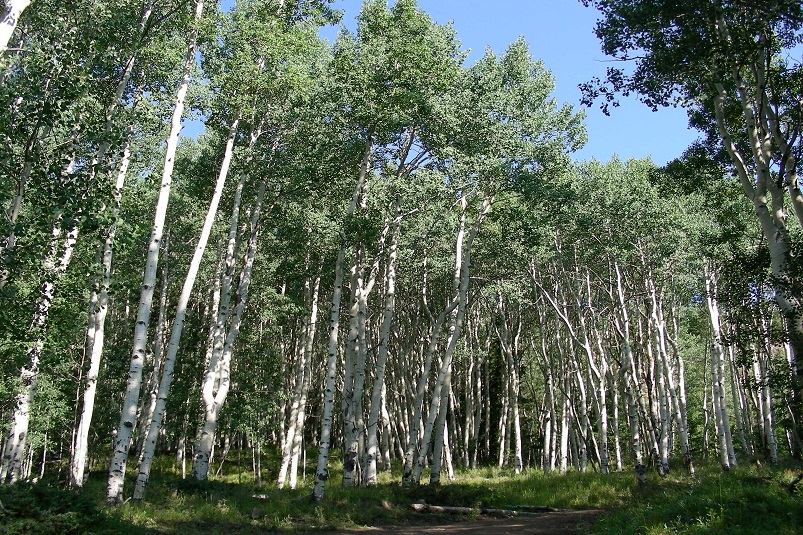
Aspen (Populus tremuloides). PHOTO Eric Beckers
In my early 20s, I moved to the Pacific Northwest, where moss-coated coast Douglas firs tower over misty trails, making every hike feel like an exploration from “The Hobbit.”
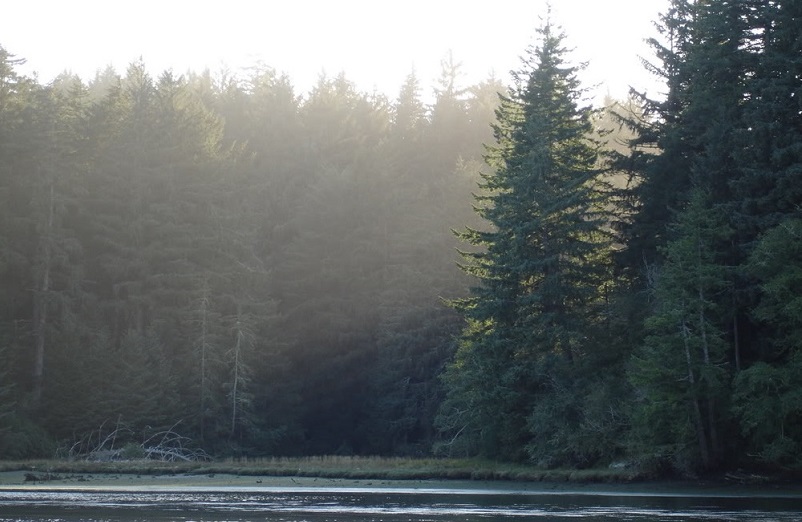
Coast Douglas fir (Pseudotsuga menziesii). PHOTO Jimmie Buchanan
Eventually, I spent a year living aboard a 27-foot sloop sailing from Portland, Oregon, to the Sea of Cortez. While GPS and nautical charts were helpful, too, trees played their part in making sure I knew where I was when the coast was in sight. Oregon offered Pacific madrones, their papery bark peeling to reveal smooth green flesh, like an alien’s bad sunburn, and gnarled shore pines which mirrored the flow of wind and sea at nearly every anchorage. In California, blue gum eucalyptus — which is actually an invasive non-native — added a minty scent to the shores of Cape Mendocino and San Francisco’s Angel Island. And the desolate coast of Baja looked even more foreboding with its fields of spiny organpipe , treelike cardón and cholla cacti.
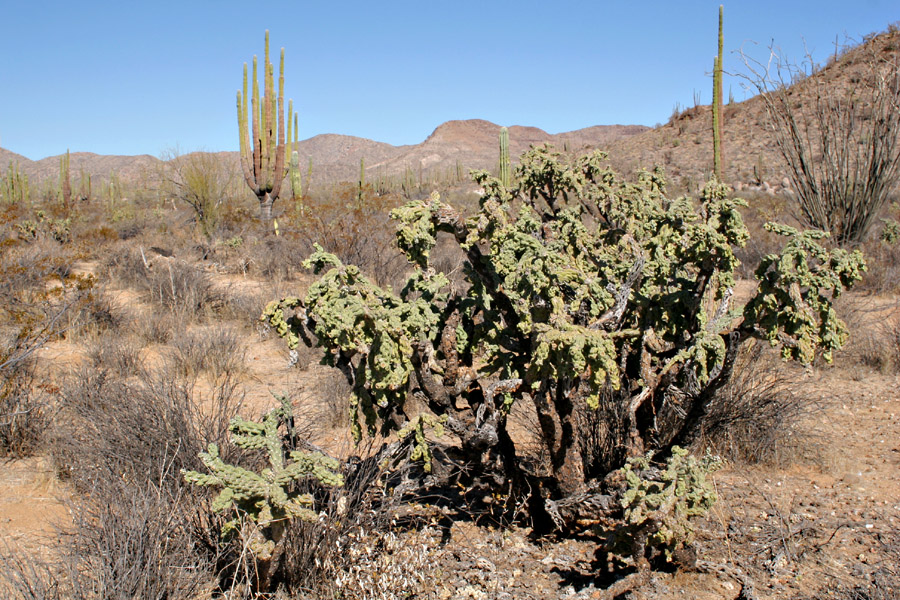
Buckhorn cholla (Cylindropuntia acanthocarpa). PHOTO Patrick Alexander
After living at sea, I moved onto a camper van for five months, driving across the United States from Washington to the East Coast and eventually to Austin, Texas. The fiery sugar maples of Vermont in October were particularly captivating en route, as was the blanket of fallen chestnut oak leaves in Virginia. When I started seeing the massive black trunks, smooth evergreen leaves and tiny acorns of live oaks, I knew I was getting close to Central Texas.
My first winter in Austin, the pecan tree in the empty lot next door shed nuts all over my yard; I promptly bought a nutcracker and dug in, enjoying the fruits of my new home.

Pecan (Carya illinoinensis). PHOTO Lee Page
Nowadays, I am thrilled to take my lunch breaks among the thriving native trees in the Wildflower Center’s Texas Arboretum, where there are plenty of picnic tables awaiting you, too.
Lady Bird Johnson said, “Wherever I go in America, I like it when the land speaks its own language in its own regional accent…native plants give us a sense of where we are in this great land of ours.” If you’re of the same mind, plant a native tree this Earth Day (see Wildflower Center recommendations below). Just make sure the lawn-mower in your family knows where it is — and how important it is to you.
Here are five to get you started from our list of Central Texas recommendations:
Northern catalpa — With long seed pods, showy white flowers and huge, heart-shaped leaves, this is my personal favorite!
Texas redbud — These dark fuschia “red” buds make any landscape pretty in pink!
American smoke tree — Come on, baby, light your yard’s fire.
Eastern red cedar — Aromatic and two-tone with evergreen leaves and bluish berries; just make sure you aren’t terribly allergic!
Pecan — A Texas classic! Better make friends with a pie-maker.
Happy Earth Day, and happy planting!

